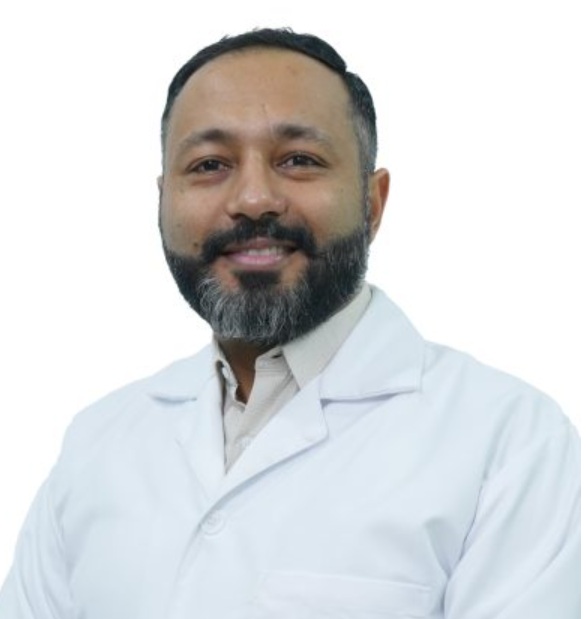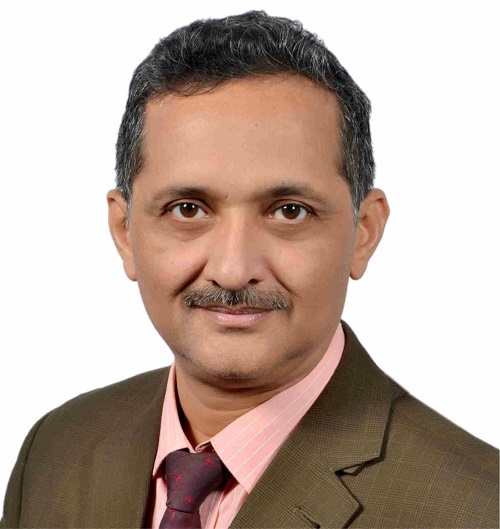What is the difference between MTP and D&C?

Quick Summary
- MTP is terminating a pregnancy prematurely at less than 20 weeks or 24 weeks for special categories of women.
- D&C is a procedure that involves the use of small surgical instruments to remove foetal tissue from the uterus.
- MTP is usually followed by D&C.
Medical Termination of Pregnancy is terminating a pregnancy prematurely at less than 20 weeks or 24 weeks for special categories of women. It is also called Induced Abortion.
An MTP procedure is usually followed by D&C, which stands for Dilation and Curettage. It is a procedure that involves the use of small surgical instruments to remove foetal tissue from the uterus. It is done after an abortion or miscarriage. Let’s delve deeper and understand the difference between MTP and D&C procedures.
What is an MTP?
MTP or Medical Termination of Pregnancy uses medications to end a pregnancy. Pregnancy can be terminated using medicines if it is between seven and nine weeks long; otherwise, surgery is required to terminate it. In India, Medical Termination of Pregnancy is permitted if the pregnancy period does not exceed 24 weeks.
Medical abortion is performed using two medicines. The doctor will prescribe a Mifepristone pill to stop the pregnancy, and another medication called Misoprostol to cause uterine contractions.
Misoprostol is taken about 24-48 hours after Mifepristone. In some time, you will experience stomach cramps and vaginal bleeding, resulting in the termination of pregnancy. But you may need follow-up visits with your doctor.
MTP may be performed for various medical, social, and personal reasons. Some of these reasons include:
- Completion of a miscarriage
- Risk to the mother’s physical or mental health during pregnancy
- Pregnancy caused by rape or sexual abuse
- Contraception failure
- Foetal anomalies (congenital disabilities, physical or mental abnormalities)
- A poor socioeconomic status may affect the health of the mother or baby
What is a D&C Procedure?
A D&C is a surgical treatment that involves cleaning the uterine lining with a surgical instrument. It is an outpatient procedure performed in a hospital or clinic.
Before the procedure, your doctor will provide instructions about eating and drinking. It is carried out in an operating room after administering local anaesthesia. D&C follows an MTP usually.
A D&C has two steps, as its name suggests:
- Dilatation: It involves dilating the cervix to allow the insertion of a surgical instrument. It includes:
- The doctor will insert a speculum (a duck’s bill-shaped device) into your vagina to examine the cervix.
- A clamp is used to hold the cervix in place.
- Next, the doctor will insert slender rods (laminaria) into your cervix to ensure it is sufficiently dilated.
- Curettage: It involves clearing the uterine lining and removing uterine tissue. It includes:
- The doctor will remove the dilating rods.
- They will insert a curette (a spoon-shaped instrument with a sharp edge or suction device at the end) to remove the foetal tissue from your uterus.
MTP vs D&C
The medical process for ending a pregnancy depends on how far along a woman is in her pregnancy. There are several stages of MTP, including the first, second, and third trimesters.
A woman can choose between a medical or surgical abortion method during the first trimester. A surgical abortion method called Dilation and Curettage (D&C) terminates the pregnancy up to or within 16 weeks of gestation. The difference between MTP and D&C are:
| Parameters | MTP | D&C |
|
Procedure
|
Combination of two medicines terminates the pregnancy by shedding uterus lining | A doctor dilates the cervix and scrapes the foetal tissue within the uterus with a curettage |
| Anaesthesia | No anaesthesia required | Local Anaesthesia is administered |
|
Duration |
Negligible | 15-30 minutes |
|
Hospitalization |
Hospital stay not required | Hospitalisation is required only if the doctor advice other tests or procedures along with the D&C |
|
Recovery Time |
It is a lengthy process therefore recovery period is lengthy (30-40 days for full recovery) | It may take 2-3 days for complete recovery |
|
Procedure Course |
MTP doesn’t follow D&C | D&C follows an MTP usually |
Benefits of MTP
An MTP is only possible up to nine weeks into a pregnancy. It is among the safest ways to end an unintended pregnancy. The advantages of MTP are:
- For very early pregnancies, medical abortion is an efficient and secure procedure
- Unless it fails, it does not use anaesthesia, surgery, or vacuum aspiration
- It is carried out confidentially without revealing any private details of the woman
- It is a non-invasive process
Benefits of D&C Procedure
The minimally painful and uncomfortable D&C technique is a standard surgical treatment. It lessens the agony and anguish, the danger of infections, and the requirement for more procedures; it is frequently advised following a miscarriage. The benefits of the procedure are:
- A relatively safe procedure: D&C is usually considered a safe procedure that does not affect your future fertility. However, there are some rare complications of D&C, which can be treated.
- Eliminates the waiting time: For an incomplete abortion, instead of allowing the abortion to proceed at its own pace, you can schedule D&C to eliminate the waiting time. D&C helps shorten the physical process of abortion for women going through pregnancy loss.
- Involves minimal physical pain: D&C is generally performed under local anaesthesia. Due to this, you may feel little to no pain during the procedure. Though you may have mild cramps or discomfort after the procedure, you can usually return to normal activities within a day or two.
- Reduces emotional distress: While going through a pregnancy loss, it can be traumatic to witness all the blood and tissue expelled from the uterus after miscarriage or abortion. During D&C, you will be under anaesthesia, unaware of the removed tissue.
Risks of MTP and D&C Procedure
MTP and D&C are usually safe procedures. However, like any other procedure, there are some risks involved, which are rare. The risks include:
- Perforation of the uterus: Uterus perforation (a hole in the uterus due to the insertion of an intrauterine device) is a common complication during an MTP procedure.
In most cases, the perforation heals itself. However, if a blood vessel or organ is damaged, it may require a second procedure for repair. - Infections: During or after the D&C procedure, bacteria can transfer from your vagina to the uterus, causing infections. The symptoms of infections include fever, pain, uterine cramping, and vaginal discharge.
These infections generally do not cause long-term complications if treated promptly. However, the infection may sometimes scar your ovaries, uterus, or fallopian tubes, making future pregnancies difficult. - Damage to the cervix: D&C can cause a tear in the cervix. The doctor may apply medicine or pressure on the cervix to stop bleeding or close the wound with stitches.
- Damage to the uterine wall: During D&C, there is a risk of too much or too little scraping of the uterine wall. If it is scraped too little, the remains of the embryo will remain in the uterus, requiring a second D&C procedure.
When D&C is delayed, the risk of excessive bleeding and infections increases. - Asherman’s Syndrome: If the uterine wall gets scraped too much, its lining can become damaged, resulting in the development of scar tissue in the uterus.
This condition, known as Asherman’s Syndrome, can lead to missed or painful menstrual cycles, future miscarriages, and infertility. Mostly, it can be treated with surgery.
Summing It Up
D&C is a relatively safe procedure in which the risk of complications is rare. Consult your doctor to discuss if and when a D&C procedure following MTP is the right choice for you. Though a difficult decision, it may help you get through the physical process of abortion, enabling you to focus on processing your emotions.
You can contact a HexaHealth expert for a more detailed discussion about your choices. Our team of experienced gynaecologists and counsellors can help you with safe medical termination of pregnancy, offering utmost care from guidance to recovery.
Frequently Asked Questions
What is MTP?
The use of a combination of medications to terminate a pregnancy is known as Medical Termination. It is among the safest ways to end an unintended pregnancy.
What is D&C?
A D&C is a procedure carried out in an operating room after giving local anaesthesia. It involves using surgical instruments to clean the uterine lining to remove the remains of foetal tissues.
What is the difference between MTP and D&C?
Pregnancy can be ended medically depending on the length of the pregnancy. During the first trimester, a woman can terminate the pregnancy by medicine (MTP) or surgical abortion. The termination of pregnancy by surgical method up to or within 24 weeks of gestation is done using the Dilation and Curettage (D&C) procedure. A D&C procedure usually follows an MTP.
Does having an abortion hurt?
It may feel like menstrual cramps. The degree of pain depends from person to person. Following an abortion, you might have slight cramping.
Is MTP effective?
The termination of pregnancy with MTP has a very high success rate. The effectiveness of MTP is highest if the medications are taken within nine weeks of pregnancy.
What kind of anaesthesia will I receive for MTP?
No anaesthesia is necessary. Most individuals find relief by using hot water bags and over-the-counter pain relievers like Ibuprofen. Additionally, anti-nausea medications are prescribed for nausea.
What kind of anaesthesia will I receive for D&C?
Local anaesthesia is given to numb the cervix. Oral drugs such as Ibuprofen are provided as needed to relax you and manage your discomfort.
How much will I bleed after the D&C procedure?
After the D&C procedure, patients typically bleed for up to two weeks.
Will I be able to have children in the future after MTP or D&C?
There are no signs that a medical abortion or D&C will impact a patient's fertility. A woman can conceive as soon as she is ready to have a baby.
Is medical abortion better than surgical abortion?
Medical abortion is most effective if done within nine weeks of pregnancy. The surgical method is preferred if it is more than nine weeks. A gynaecologist would be able to provide the best way to terminate the pregnancy, depending on the health factor of the woman.
How long will the cervix heal after D&C?
For the initial days, you may experience back pain and cramps that resemble menstruation cramps and pass tiny blood clots from your vagina. After the operation, you can experience minor vaginal bleeding for a few weeks. In one or two days, you'll probably be able to resume most of your regular activities.
When can one opt for MTP?
Medical abortion is very effective till the eighth week of pregnancy. If these drugs are used after the 10th week of pregnancy, they are ineffective. Before undergoing a medical abortion, you must go for a doctor's consultation.
How will my abortion impact my menstrual cycle?
Your period should resume four to eight weeks after having an abortion because abortion initiates a fresh menstrual cycle. Your next period will depend on the type of birth control you use. If you are not using any form of birth control, your period should start eight weeks after the abortion. Inform your doctor if your period doesn't begin eight weeks following your abortion, and you are not on birth control. You can experience post-abortion bleeding and spotting for several weeks or heavy bleeding with clots for a few days.
Last Updated on: 2 July 2024
Reviewer

Dr. Arti Sharma
MBBS, DNB Obstetrics and Gynaecology, Diploma In Cosmetic Gynaecology
9 Years Experience
Dr Arti Sharma is a well-known Obstetrician and Cosmetic Gynaecologist currently associated with Aesthetica Veda in Bengaluru. She has 9 years of experience in Obstetrics and Cosmetic Gynaecology and worked as an expert Obstetrician...View More
Author

Charu Shrivastava
BSc. Biotechnology I MDU and MSc in Medical Biochemistry (HIMSR, Jamia Hamdard)
3 Years Experience
Skilled in brand marketing and SEO-driven medical content that educates and engages patients, healthcare professionals, and the general public. With medical writing and proofreading expertise, she ensures accuracy,...View More
Expert Doctors (10)
NABH Accredited Hospitals (6)
Latest Health Articles
Related Treatments

























